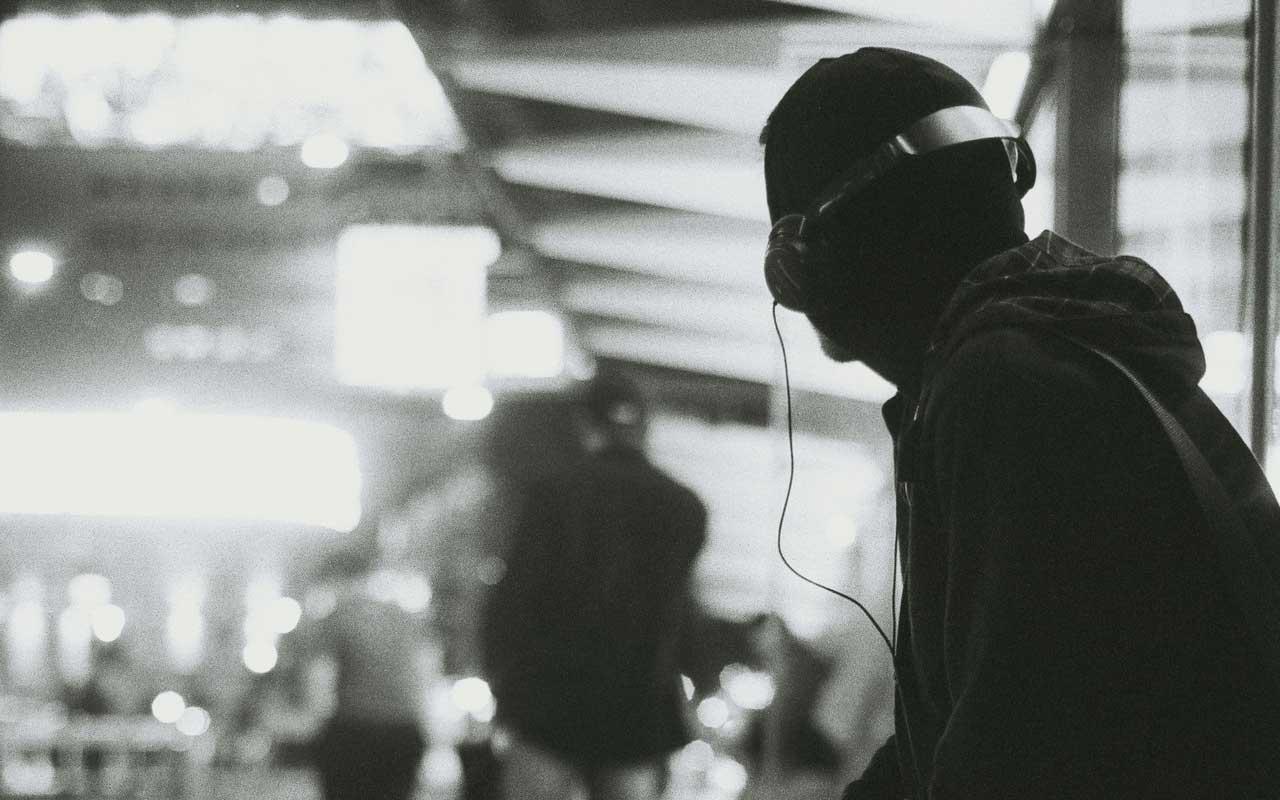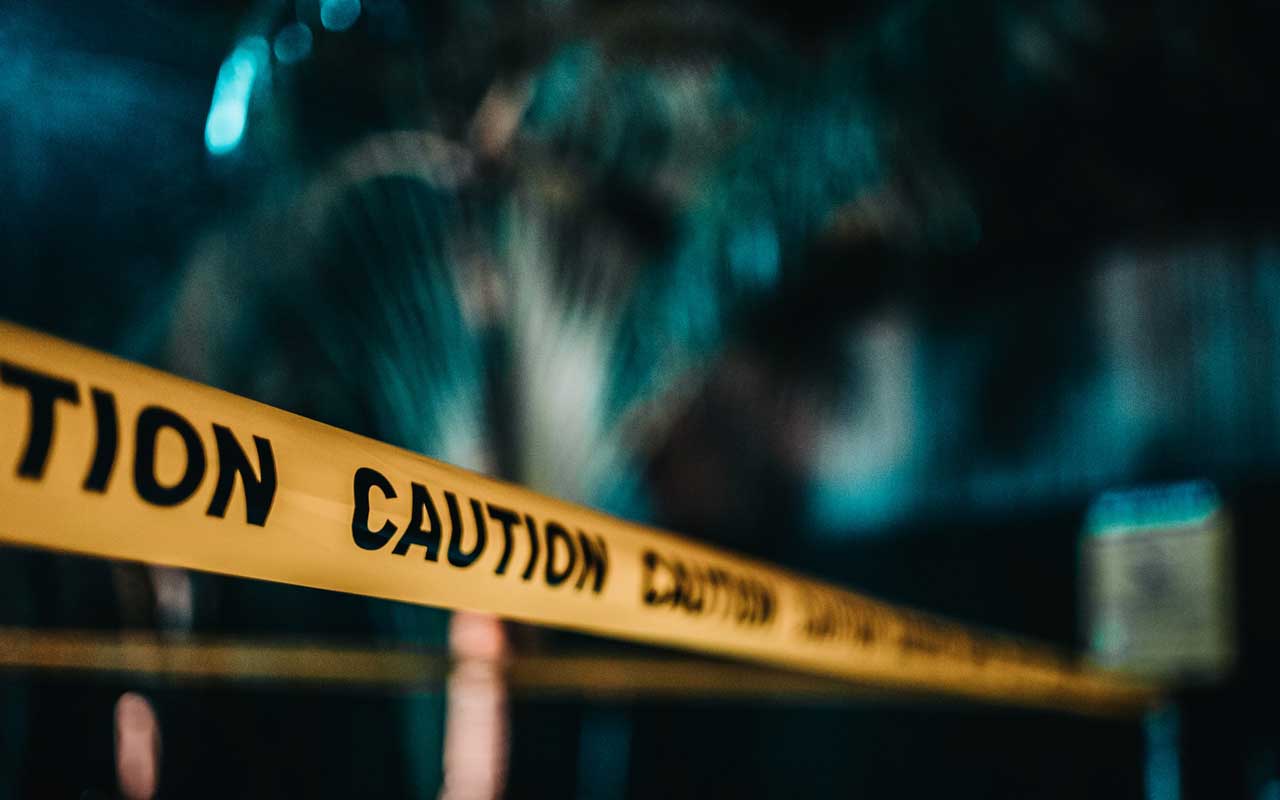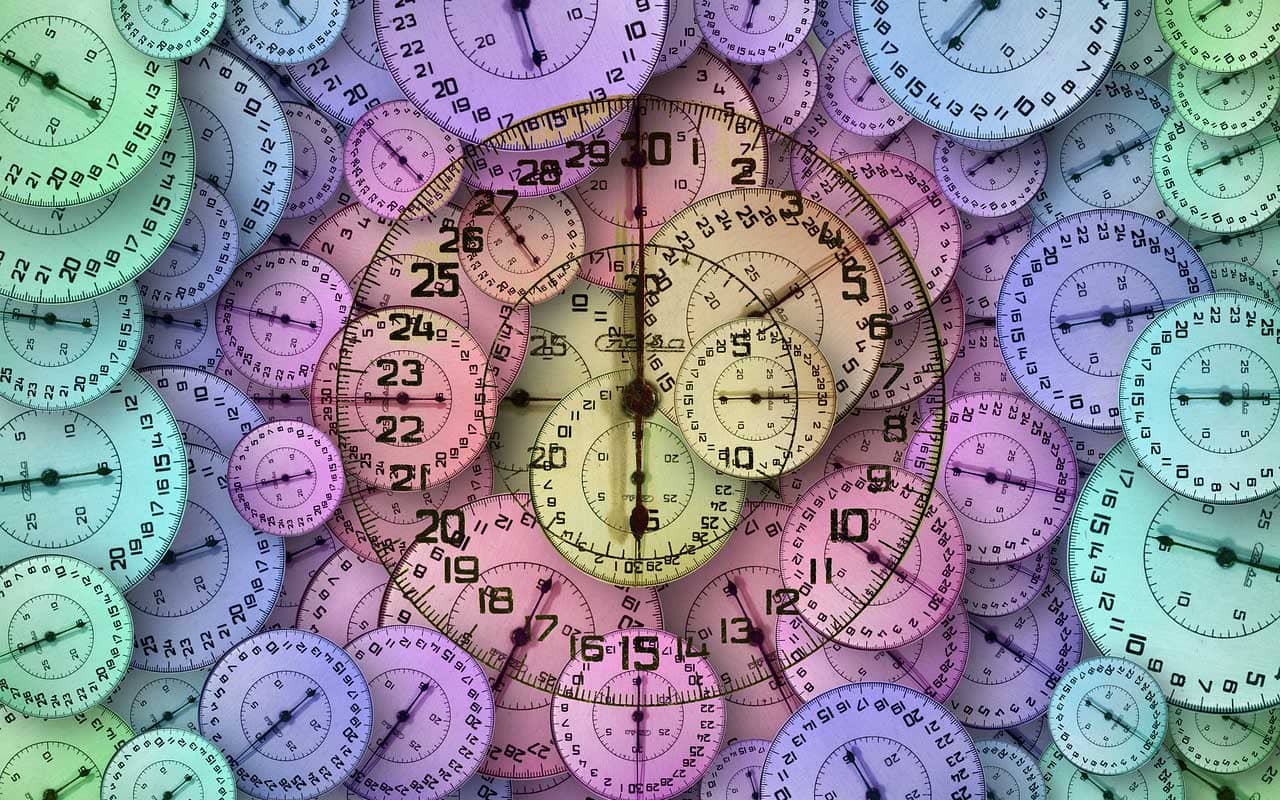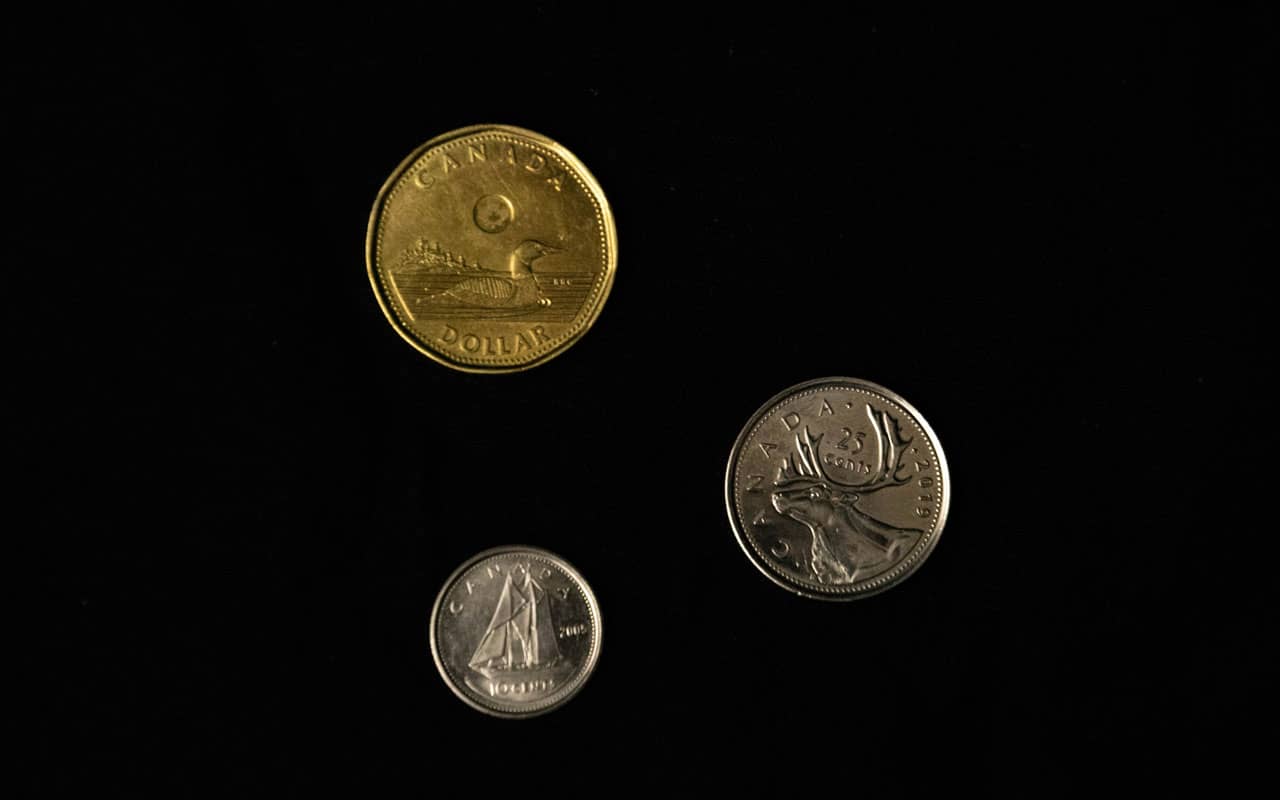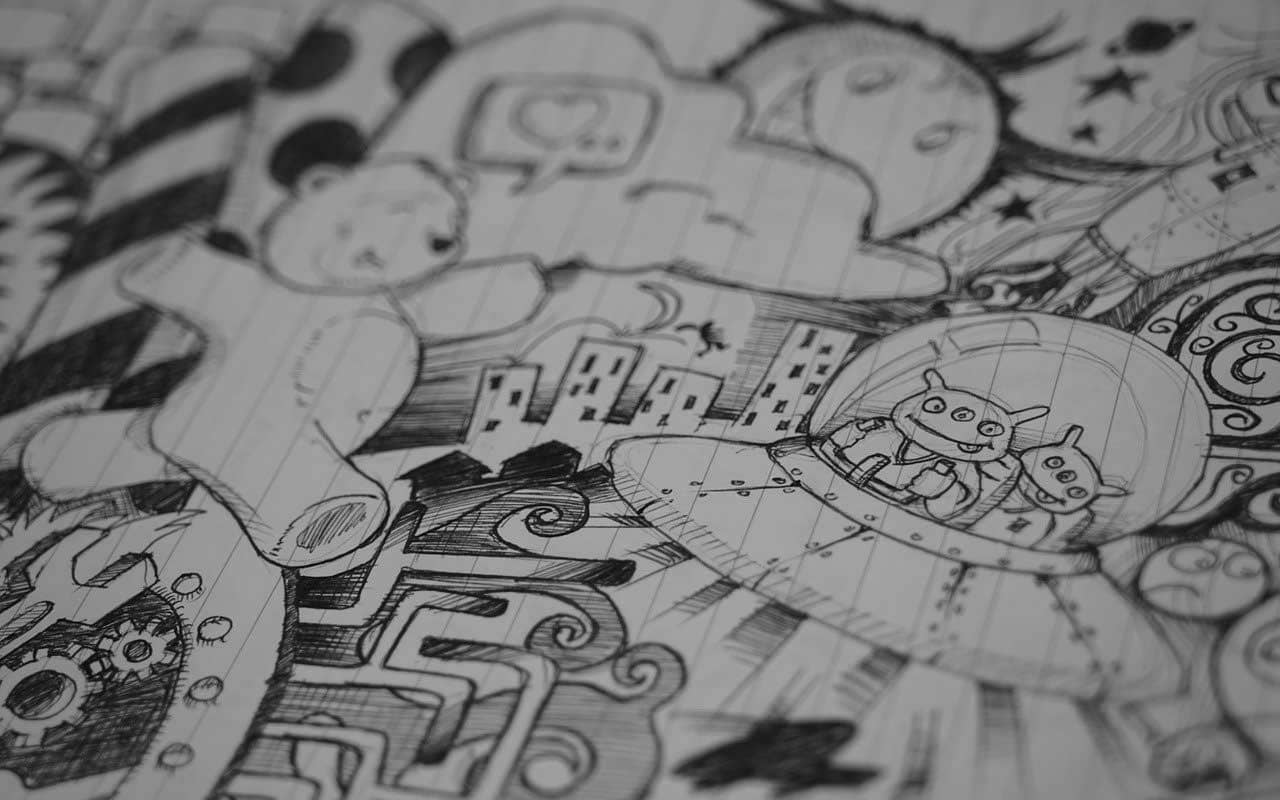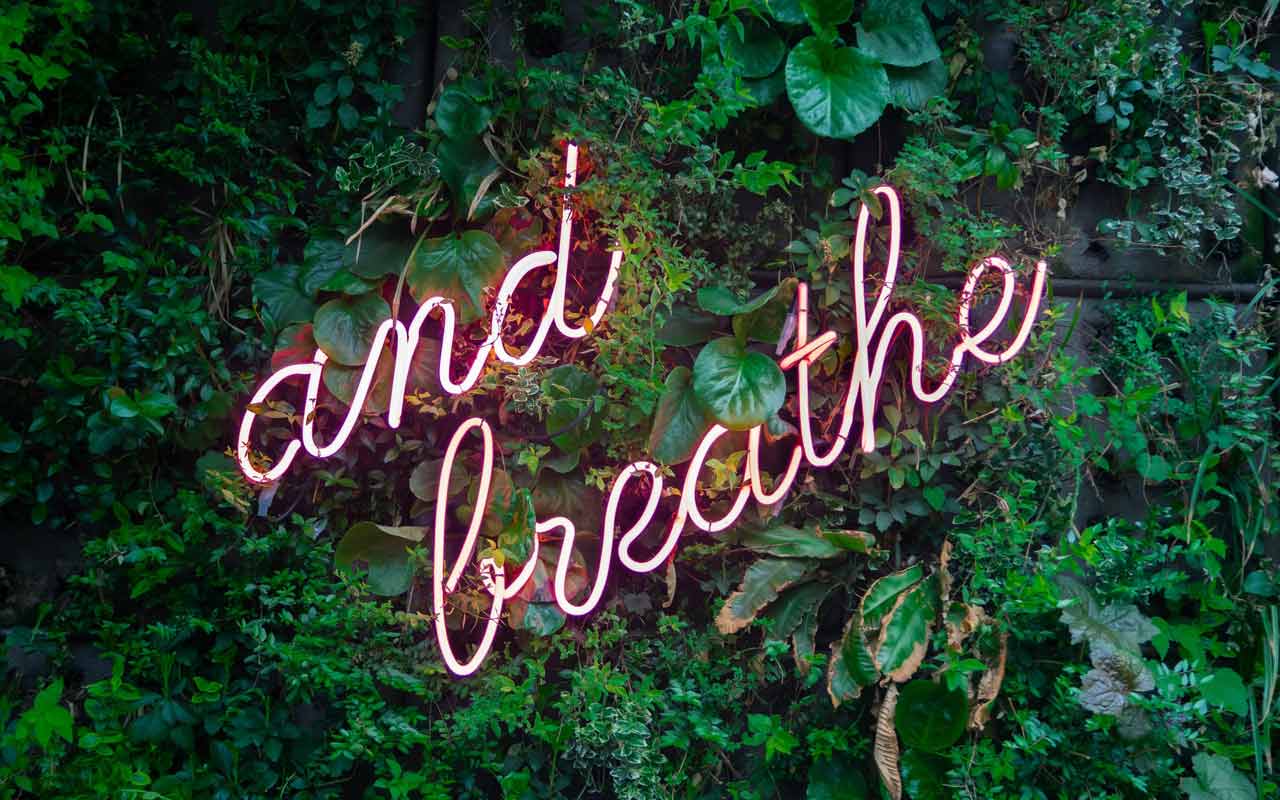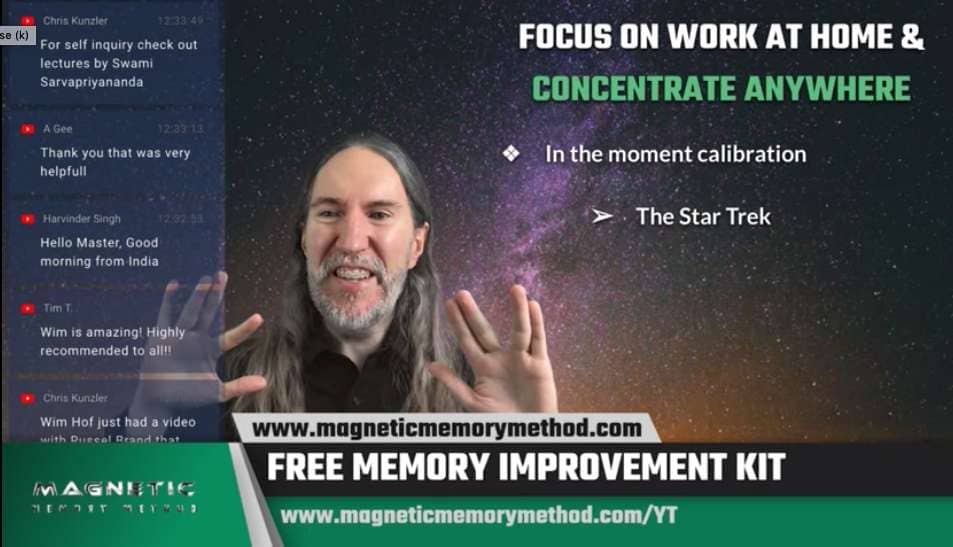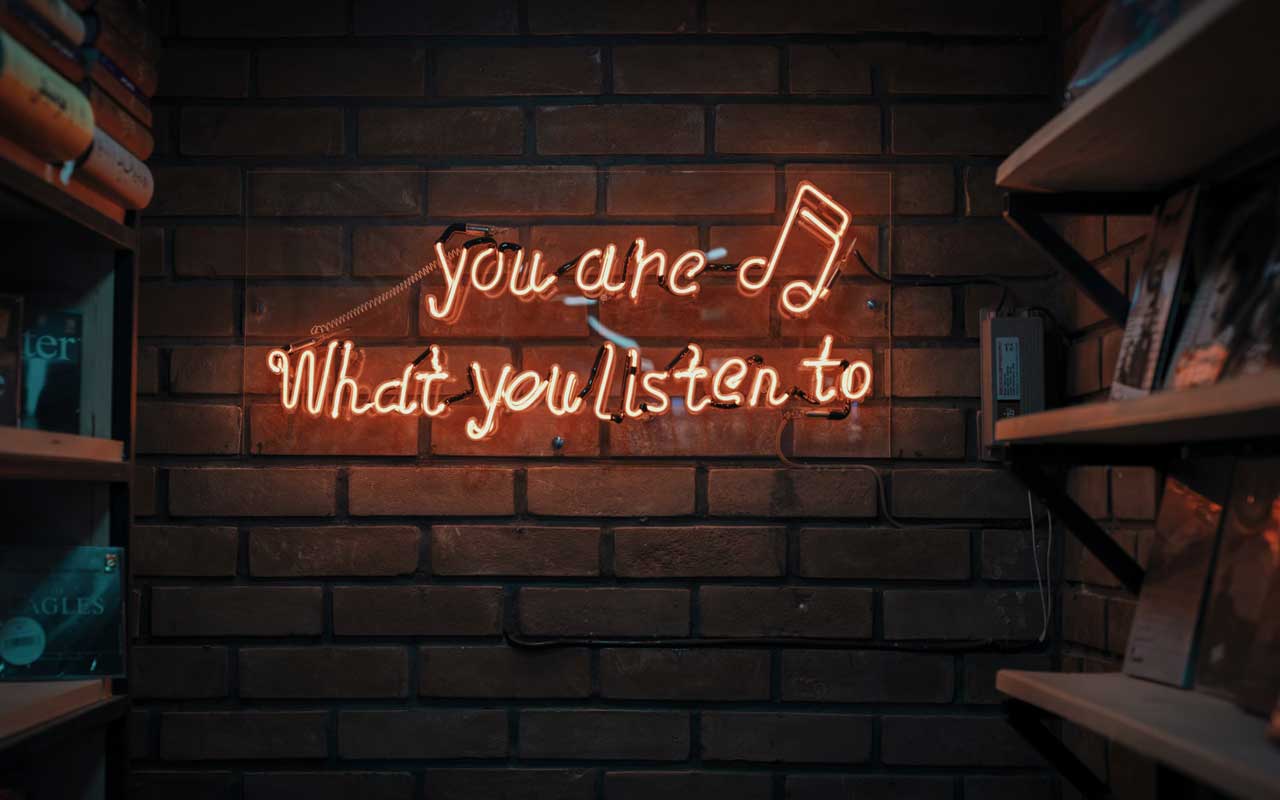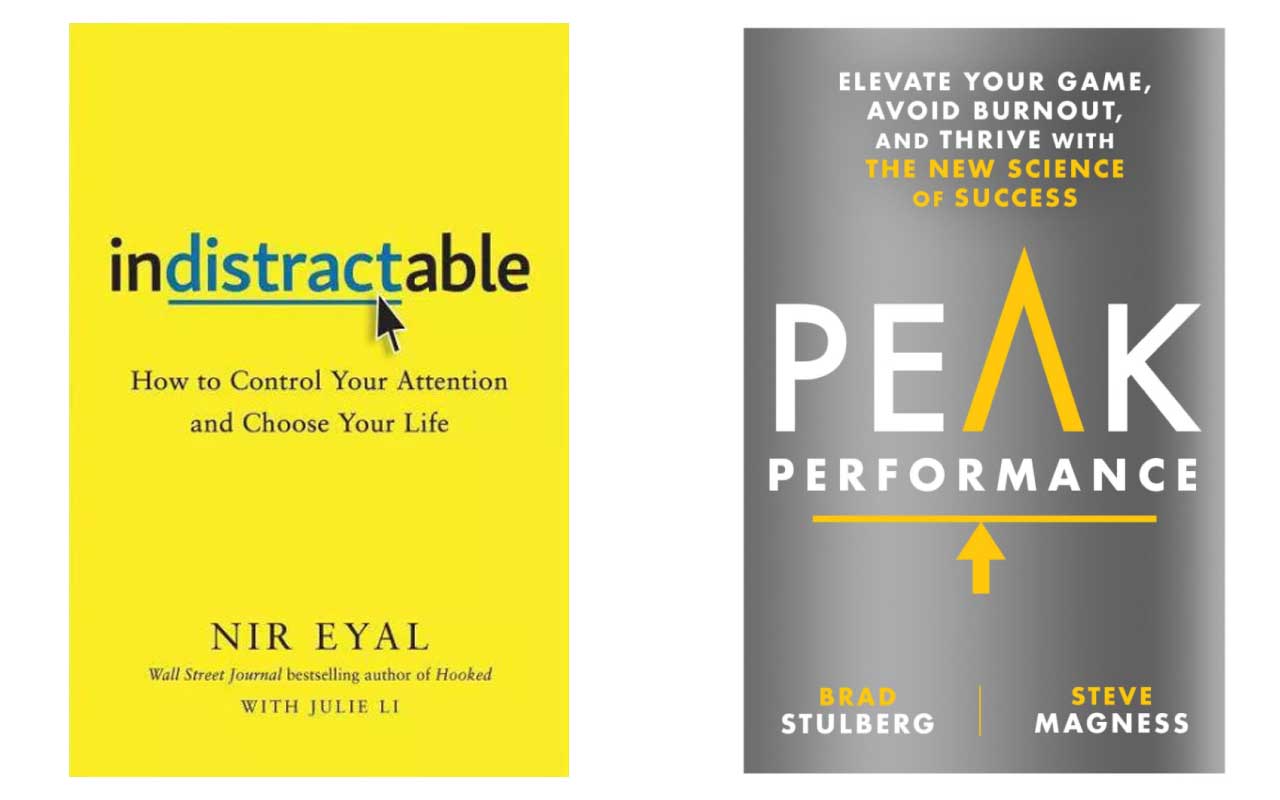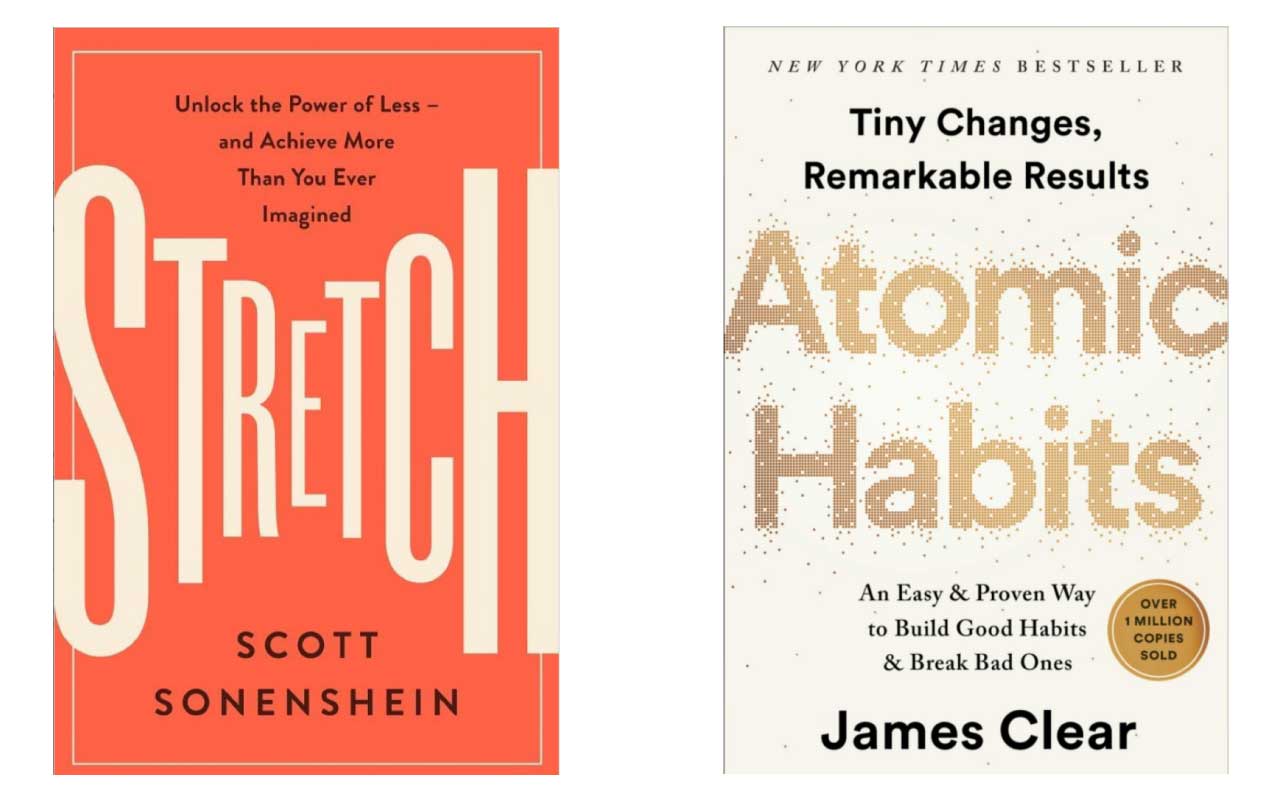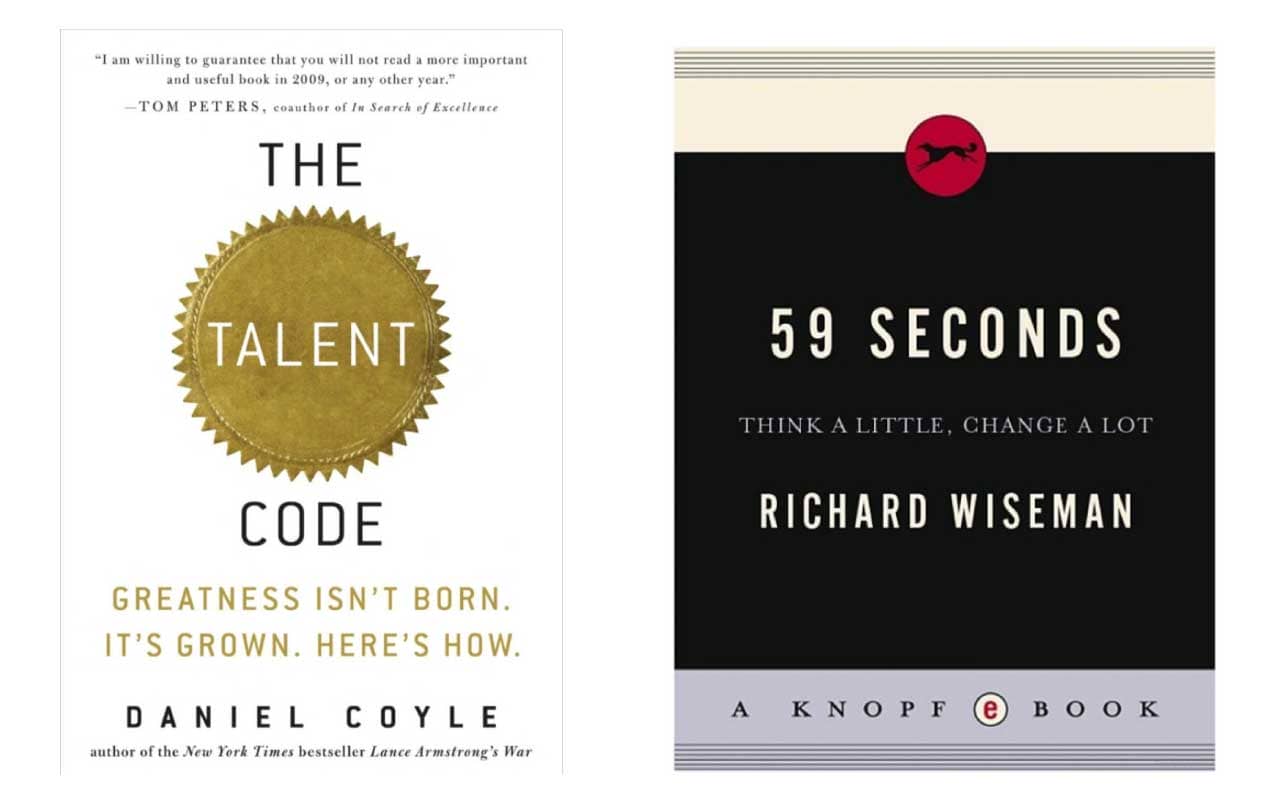 Focus? What’s that?
Focus? What’s that?
Even worse… focus on work? Who are you kidding? Not during these chaotic times.
The world was already overwhelming, and that was before a global pandemic upended our lives and made just getting through the day a Herculean task.
And then you have those friends. You know the ones. They seem like they have their stuff together — they get up and work out every day, learn how to bake bread, and maybe even claim to be writing the next “Great American Novel.”
Compared to them, your struggle to focus on even the smallest task feels like a tragic failure. How are you supposed to concentrate when it feels like everything is crumbling around you?
But wait! Before you walk away in surrender, there is some good news:
Even though focused attention won’t magically fall from the sky, there are still plenty of things you can do to get it back.
Before you hide under your desk and eat your weight in quarantine snacks, let’s look at 24 tried-and-true ways you can concentrate on work.
Here’s what this post will cover:
- Staying Focused at Work
- The Fight Between Focus and Survival
- Long-Term Tactics
- In the Moment Calibration
- Maintaining Your Focus on Work
- Recommended Reading
- Frequently Asked Questions
Ready to get your focus back? Let’s go.
Staying Focused at Work
Let’s talk about how to focus on work.
There’s an additional bit of good news: focus is like motivation. It’s not actually necessary. Showing up and going through the motions is usually more important than your desire to show up.
So even if you don’t feel like it, you can still succeed at staying focused at work. It just takes a specific approach, including the techniques we’ll talk about today.
You might also wonder: how can you focus and concentrate no matter what?
It’s one thing to stay focused when things are normal and your environment is controlled. But what happens when chaos strikes? What happens in tough times like these?
I remember going to Manchester by train one time with heavy metal loud in my ears and a deck of cards in my hands. I went to a cafe and drank Bulletproof coffee while I listened to heavy metal as loud as I could and memorized cards.
Why? Because I wanted to work on my focus and concentration — I wanted to be able to focus and concentrate no matter what.
As you might imagine, it’s very challenging to sit there and focus on playing cards with a lot of noise. Some people can concentrate well with some sort of background noise. Others need total silence.
But the truth is, you don’t always get what you want.
The real world isn’t quiet and controlled. The world outside your door can be in turmoil, full of distractions, and not exactly conducive to staying focused.
There will never be a situation that’s 100% ideal. All of a sudden you might have everything yanked out from under you — like our world is experiencing right now due to COVID-19.
But you still have to concentrate. You still have to show up and be able to focus. You still have to survive.
The Fight Between Focus and Survival
Before we go any further, I want to be clear: in the midst of disruption, forgiveness is key.
Forgive yourself if you can’t focus. Forgive yourself if you can’t concentrate. You’ve got a human brain, which is very survival-focused.
After forgiveness, your next step is to make a decision — commit to making a change and improving your ability to focus.
This post will cover three categories of techniques you can use to up your focus game:
- Long-term
- In the moment
- Maintenance
Whether you’re staying focused at work, at home, or elsewhere in the world, these 24 tactics will help you get settled and sorted. You’ll come out the other end of this post with a strategy, path, and plan for how to focus on work.
Let’s start with the things that work over the long haul.
Long-Term Tactics
While this post will also cover approaches you can take in the short term, what happens 10 years from now if you’ve allowed this global crisis to completely derail you? How will you feel if you haven’t accomplished any of your big goals?
Instead of putting a bandaid on your focus woes, it’s better to choose long-term lifestyle tactics that help you focus on demand.
1. Develop Rituals
The top tactic for developing focus that lasts year after year is to develop rituals.
And the more you practice these rituals the better you develop your focus, because you’re practicing focus itself in order to get the rituals done.
I have rituals I do every single day — it’s a really powerful way to frame the day. As Tim Ferriss says:
“If you win the morning, you win the day.”
One of the things I love most about the “conquer the morning” principle is there are certain things I touch upon every day, and even if I don’t make it back to them later in the day I at least know I did something that day to move toward my goals.
It’s centering to know you did the things that are most important to you before you grabbed your phone and allowed the tsunami of the world to come in.
And if the morning isn’t your peak time, test and figure out when it is. Your rituals can be for any time of day.
If you’re human with a brain you’re probably going to be like every other human with a brain: We all need consistency. We all need to show up. And it’s really helpful to frame things.
2. Frame the Day
But what does it mean to “frame the day?”
Mental framing helps you process and react to situations, and is responsible for how you view the world. And rituals help the unconscious mind create frames for your experience.
Dr. Robert Langs showed in his research how the unconscious mind is horrified by a lack of frames. Even though the conscious mind thinks it loves chaos and disorder, new and novel situations, and variety, his research reveals this doesn’t show up in actual practice.
People inject chaos. Even though they might consciously say they love it, all of their self-punishing behaviors come from their deep, unconscious dislike for a lack of framing in life.
To help you understand the concept further, let’s look at an example.
The story of Job comes from The Bible, and it’s a big lesson about what happens when chaos arrives. It asks:
- How do you establish frame in your life?
- How do you survive through chaos?
- How do you keep and maintain structure even if there’s no easy explanation for why things have gotten so bad?
- How do you still show up?
The story of Job reveals the answer: you develop rituals and follow them.
3. Concentration Meditation
One strategy that will help you develop rituals is to develop a number of concentration meditation tactics.
My recommendation here is simple: show up and meditate every morning.
Now, I don’t always meditate in the mornings. Sometimes I need to shift the time based on what’s going on during the day, but the key is consistent practice.
Scientific studies show that meditating a minimum of 3-4 days per week is where people start to see significant benefits.
With the large number of concentration meditation options out there, it can be overwhelming to pick which one you’ll practice. Rather than over-complicating things, just pick one that resonates with you and start there.
And if you want to focus better, be sure to pick meditations proven to improve concentration. Not all of them will do that, but this concentration meditation post and this YouTube Livestream include meditations specifically designed to help you focus!
4. Vision Statement
You will create even better long-term focus when you tie your rituals and concentration meditation to a larger vision statement.
Rather than saying something vague like, “I’m going to start working on my concentration,” tie your intention to a big-picture goal you want to accomplish.
This could be for:
- Your career,
- Your family,
- Your health and wellbeing, or
- General knowledge.
If you want to get somewhere, you need to have a plan — deciding to drive somewhere without GPS or a map is likely to get you lost or detoured if you’ve never been there before.
Your vision statement ensures that when you need to focus, you have an idea of where you’re going and how to get there. Otherwise, the evil “Doctor Forget” is nipping at your heels and his heart is very cold. But your vision can melt him where he stands.
5. Create a “Decision Matrix”
Your bigger vision, paired with the roadmap for how to get there, gives you what is sometimes called a decision matrix.
When trouble comes and you need to make an in-the-moment decision, this matrix will help you make choices aligned with your long-term goals. Rather than a random decision made out of fear, your choice can help you get where you want to go.
Having a vision gives you the ability to answer the following questions:
“Does this decision I’m making help my vision two minutes from now, two weeks from now, two months from now, two years from now, 20 years from now?”
Next, let’s dig a little deeper into the idea of the decision matrix.
The “Not Now” Folder
One of the best lessons I ever learned was in a Romantic Poetry course during the fourth year of my B.A. The professor told us that throughout our lives we would be faced with endless ideas, and we would need a way to figure out if the idea was right for us in the moment.
He recommended taking those ideas, sorting them out, putting them on paper, and putting them in a folder that’s divided into different categories:
- Immediate Future
- Not Now
- Not Ever
Each idea can be moved around between the folders as your life unfolds. For each possibility that arises, ask yourself, “Is this right for right now?” If not, it goes in the Not Now folder.
The 3 Envelopes
Another similar example of how to create your decision matrix comes from Dean Jackson.
Write down each of the ideas or possibilities that arise on separate pieces of paper — include all the different opportunities and options.
In his 50 Minute Focus Finder training, Jackson talks about doing a “brain dump” that you extract ideas from and organize them into envelopes. You can then put the three envelopes on your office door, where they are your instant answer to “what’s next?”
Whether it’s something that must be done today, something that’s important in the near future, or something you want to get done eventually, there’s a waiting list of priorities ready for you.
The envelopes become an instant focus mechanism.
The 3 Coins
Joe Polish is Dean Jackson’s partner on the I Love Marketing Podcast. He has an exercise called the Three Coins.
You could label your three folders:
- The Gold Coin Folder
- The Silver Coin Folder
- The Bronze Coin Folder
It becomes fairly obvious that you’ll get further ahead in life if you work more on the gold coin tasks — they’re the ones with the biggest return on investment (ROI). The silver coin tasks are less so, but you need them for variety.
And maybe the bronze coin tasks are ones you hire someone else to do. For example, if you’re in University or working full time and don’t have much time, hiring someone to deliver your groceries and clean your house can help you get the maximum ROI out of your time.
Do a separate brain dump to make a list of your bronze coin tasks. What’s taking away from your ability to spend time or focus on your long-term goals and vision? Then make a list of who you could hire to take those tasks off your plate.
Mind Maps & Journaling
One final way to craft your decision matrix is to use mind mapping and journaling to help you ideate.
When you’re faced with a big decision, put the decision keyword in the center and then use mind mapping tools to think through all aspects and angles of your choice.
One of the most helpful things I’ve done is to mind map my vision statement. Then, when I work on a project, I keep the mind map in front of me until the project is done. That way my vision is always there to remind me of my long-term goals.
But remember, the idea of a decision matrix assumes you have a vision statement in the first place. Make sure you’ve created a vision statement before moving on to this tactic.
6. Gratitude Practice
Gratitude may not seem like something that directly impacts your ability to focus.
But sometimes when you can’t focus you need something to realign yourself. And spending a little bit of time writing down what you’re thankful for can quickly reassert your focus.
Gratitude creates an immediate reawakening and awareness of the good things in life.
Some of the benefits of gratitude are:
- Be more productive,
- Build a more resilient mindset,
- Find creative solutions to difficult problems, and
- Grow your confidence.
Often, when your focus is broken you’ll have a sob story switched on in your head about how everything is terrible and nothing is going right. Practicing gratitude helps flip the switch over to the things that are going right.
Do this by writing down 10 things you’re grateful for. It could be as simple as having a roof over your head, access to clean water, healthy food to eat, having a family — or as deep and complex as you want.
This is great memory practice as well as feel-good practice.
7. Common Sense Tactics
There are a number of long-term lifestyle choices that affect your ability to focus.
I feel like these should be obvious, but they’re important enough they bear repeating. To help you focus on tasks, be sure to do the following:
- Drink plenty of water
- Eat a healthy diet
- Exercise regularly
- Get enough sleep
- Do regular memory exercise
When you take care of it, your body (and brain) is like a well-tuned machine.
8. Short Content Fasting
Detox yourself from short content.
The internet is full of 60-second bites of entertainment, designed to keep you distracted and scrolling. And those 4-minute videos give you a dopamine hit that leaves you wanting another and another.
This loop of short content and constant dopamine hits basically fries the brain. If you’ve ever surfaced from “falling down the algorithm” and staring at your screen for hours, you know the disorienting feeling that results.
There is a time and place for allowing yourself to fall down the content rabbit-hole, but it’s best to limit the time you spend in this mode.
You can see the direct results of this breakdown in focus all over the internet. When people lash out in comments on social media – without thinking about what they’re saying – I believe it’s an indicator of an addiction to this constant attention-switching.
Instead, make a commitment to spend time on long-form content.
But you might find it hard to focus for longer stretches of time when you first switch over. So what can you do to help you move away from short content? Let’s look at 4 approaches.
Savasana
Savasana (sometimes spelled shavasana) is a yoga pose where you lay perfectly still. It’s often called “corpse pose” — quite the visual image.
This will help you develop focus because you have to concentrate on staying still. And while you’re in savasana you can listen to long videos. You might also pick a very detailed conversation or a 45-minute (or more) lecture and see how long you can lay there and listen.
This gives you the opportunity to become a student of your own twitchiness.
Pay attention to how long it takes before you want to watch or listen to something else. Or how long before you start to fall asleep or get anxious because your brain would rather be doing anything else.
Then you can extend the practice. See if you can make it longer the next time. Monitor and track your twitchiness — it’s a very powerful thing to study and practice.
Here’s a memory exercise you can add to your savasana practice:
While you’re focused on whatever long audio you’re listening to, pay attention when your mind wanders. Notice the things that your brain brings to the surface, and then memorize in real-time what your brain wants to check in on.
For example, I was listening to Bart Ehrman – an American New Testament scholar – and he mentioned the Coptic language. I thought, “Oh! I want to go and do some more studies in the Coptic language.” To help me remember, I used a Memory Palace where I added an image of the cop from Monopoly dragging another player off to jail. Then later when I wanted to remember my new to-do list item I went back to my Memory Palace to retrieve the idea.
But what happens if you just can’t lay still?
Interleaving
If you absolutely can’t manage to sit still long enough to practice savasana, you can try interleaving instead.
Before you start short content fasting, have three different things (from three different topics, max) in a playlist ready to go. That way you can switch back and forth between topics to keep you focused.
For example, I have not only Bart Ehrman’s stuff about the Bible queued up, but also some long-form content about hermeticism that I can use to switch back and forth.
Interleaving can be great not only for developing focus but also to help you accomplish large learning projects.
So imagine you have three playlists with sets of videos that are a minimum of 45 minutes long — then you practice getting through as much of each one as you can, without moving.
Savasana focus is simple. Lay on your back, don’t move, listen to your playlists, and stay there as long as you can stand it.
Memorize in Real-Time
One great way to build focus is to listen now and take notes later.
As you’re listening to your long-form content while lying in savasana, try to memorize 3-5 things from your playlist as you go along.
But if your memory isn’t there yet, it’s okay. You can also take notes as you go — taking notes is also a great way to focus and concentrate on long-form content.
If you need help figuring out which note-taking tactics work best for you, check out this YouTube video:
It will help you get some ideas about how to get the most out of the content you’re guzzling down.
9. Long-Term Learning Projects
To help you achieve your Vision Statement, it’s quite helpful to have multiple long-term learning projects.
You can use interleaving to help keep your brain from single-subject overwhelm. Even though you hear over and over again that you should only focus on one thing at a time, there’s actually some nuance to it.
Topical study allows you to focus on one thing inside of three things, and will take you on many wild and wonderful adventures.
For example, right now I’m doing a major memory project in the hermeticism world. This extended study and writing led to the Art of Memory parts one and two:
When you get into a deep topic and start reading the secondary texts, you’ll often gain insight you might otherwise have missed in the primary text. And having long-term projects where you deeply understand the topic will allow you to act in the world with wisdom.
Here are a few examples of long-term projects you could tackle:
- Learn a new language
- Learn to play a musical instrument
- Learn to juggle
- Learn to swim
- Learn a martial art
When you allow yourself to switch from topic to topic within a limited field of study, you allow for variety and have diffuse thinking. And even 5-10 minutes a day can really help you focus.
As we move along from these long-term tactics into short-term calibration, remember the power of setting the stage so you can practice for years.
To really feel the full benefit, you have to commit. This ability to focus on work is a game of neurochemistry. It’s a game anybody can win.
You just have to show up to the one casino where you can actually win: your life. If you treat your life as less casino and more laboratory, you get the chance to run your experiments properly and set yourself up for success.
Next, let’s shift focus from the long-term and look at the ways you can work with focus right now.
In the Moment Calibration
When you need to concentrate immediately, what can you do? How can you calibrate your brain to bring yourself back into focus?
Let’s look at the tips, tricks, and strategies to help you focus with a second’s notice.
10. Creativity Drills
Creativity is not what we think it is — it’s not just inventing something out of nothing.
There are a lot of definitions and terminology that get thrown around when people talk about creativity, and most people think they’re not creative.
But I don’t believe that for a second. You are creative. All the time, in fact. You couldn’t even open the fridge if you weren’t creative.
This is easier to understand once you get what creativity really is. First, think about the word “original.” We often think creativity means creating something brand new, something no one else has ever done before.
But, the basis of the word original is “of origin.” So there’s really nothing original or unique. Where else would things come from except from their origin — from the world?
Massive amounts of creativity tend to come from playing with pre-existing elements.
This is the thing that’s so hard to make clear about using memory techniques: you don’t want to be creative or try to reinvent the wheel. Instead, you want to dig into your preexisting knowledge and draw upon what’s already there.
Now let’s look at a few drills to help you flex your creativity muscles.
The Creative Thinker’s Toolkit
Gerard Puccio set me onto a wonderful adventure through his course The Creative Thinker’s Toolkit.
I’m quite a logical person and want to see the science behind the techniques I learn. And one of the things I’ll never forget from the course is the scientific research behind creativity drills. If you’re interested in learning more about the science behind creativity, I highly recommend his course.
If you need help staying focused at work, and if you have to be “on” while you’re there, the following creative drills can be used as a warmup to get you there.
Memorize Cards
When I need to memorize information from my language learning, I often memorize cards before vocabulary.
Instead of diving deep into a particular language and doing intense Memory Palace work, I now start with 10 phrases or 10 pieces of vocabulary. Then I can start with a quarter deck of cards for a simple creativity exercise.
For example:
If I drew the Queen of Spades, I see that she’s wearing a chain around her neck, a necklace. I might associate the card with the Austin Powers character Fat Bastard, by thinking “chain” then “chin” and remembering his double chin.
Then if I drew the 6 of Hearts, I can imagine how Fat Bastard might interact with six hearts running around on the ground. You can go through whatever portion of the deck you choose and tell a story based on the cards you draw.
You don’t have to start with memorizing cards, though. Think about what you want to get out of the memory tradition, consider your larger vision, and then craft a path — figure out what you could memorize in life that will get you ahead of the curve.
Memorize Numbers
If you don’t want to memorize cards, you can also memorize numbers.
Whether you’re working from home or at the office, you can have a deck of cards or a stack of index cards on your desk.
For example, I have a stack of index cards with numbers written on them, and if I draw the card with the number 50 I might think:
L-0. L-S. Lasso. Which lasso? How about the one from Wonder Woman?
I’ll run a couple of number drills like this before I need to focus on a major exercise. It’s kind of like a memory palate cleanser. And it’s huge for being able to focus.
I recommend having something physical to work with, as opposed to digital. I’ve played with a lot of digital memory apps, and none of them work as well for me as physical objects. But test this for yourself. Don’t just take my word for it!
There’s also a great podcast episode here at Magnetic Memory Method where I discuss this (and other memory training secrets) with John Graham.
The bottom line is this: spend a little bit of time every day playing with cards, numbers, things you can touch and memorize.
Guided Doodling
I love a book called The Cosmic Journal. Every day of the journal includes an entry where you’re guided to either write things down or do some doodles of your own.
You don’t need any kind of guidance to benefit from this type of doodling, either. You may already be the type of person who doodles in the margins of your notebook during class or meetings. All you need is a piece of paper and something to write with.
To get the benefits of this kind of creativity drill, just grab your doodling supplies and let your drawing hand wander. Do this before you have to focus on tasks and see what a difference it makes.
Brain Exercises
There are also a few other exercises you can do to keep your brain fresh before you have to buckle down and focus.
You can make up your own, or try one of the following:
Garfield Minus Garfield
Take a pre-existing thing (from artwork, a book, a situation, etc.) and remove a significant piece from it. Think about what would change with that subtraction.
One example of an artist who alters comic art is Dan Walsh of Garfield Minus Garfield. He removes Garfield, leaving Jon Arbuckle talking to himself.
Lipograms
A lipogram is when you write something and force yourself to not use a particular letter.
Let’s look at a lipogram where we can’t use the letter “E” as an example:
“Tickle us, do we not laugh? Prick us, do we not bleed? Wrong us, do we not revenge?” ~ William Shakespeare
Taking the first line, you wouldn’t be able to say the words “tickle” or “we.” In the second line, you would have to find different ways to say “we” and “bleed.” And in the third line, you would need synonyms for “we” and “revenge.”
As you can see, this exercise is quite the stretch for your brain — a great little focus challenge.
Invent Your Own
Even just the act of making up your own brain exercises will help you focus!
By warming up the brain with creativity drills and brain exercises, you’ll be much more focused and attentive. And staying focused at work will be a breeze.
If you can do this even a few minutes every day for 90 days, you will build the neurochemical connections in your brain that result in laser focus.
11. Breathing
Breathing is a very powerful way to calibrate you in the moment. Let’s look at a few different breathing exercises to help you focus.
3… 2… 1… Go!
Before you have to focus on tasks, take a deep breath in, hold it, and count down. Ready, set, go! Exhale, and get to work.
If you get distracted again, take another deep inhale and hold it in while you count down. Three, two, one, go!
I learned this approach from Tony Buzan and Phil Chambers. It’s a great way to get a big burst of oxygen in your brain before you have to sit down and focus.
3-5-7 Breath
The numbers are somewhat arbitrary here, but the idea of this exercise is to choose numbers and then use them for your breathing pattern.
Inhale for a count of 3. Hold your breath in for 5 counts. Exhale slowly over a count of 7.
This is something incredibly simple you can do at your desk, and no one else would know. And it should improve your focus within a minute of two.
There is also a practice called Box Breathing that uses a static count. So for example, each round is over a count of 4. Inhale for 4, hold the breath for 4, exhale for 4, hold the breath out for 4.
The Box Breathing technique was developed by a Navy SEAL to help maintain composure during times of intense stress — so helping you concentrate on work should be easy in comparison.
Alternate Nostril Breathing
This breathing exercise involves inhaling and exhaling through the right nostril and then switching over to inhale and exhale through the left side of the nose. It can help to balance the hemispheres of the brain as well as assisting with focus.
You can do this practice by actually holding one nostril shut while you inhale and exhale out the other, or as “psychic alternate nostril” breathing (where you don’t touch your face).
Breath Withholding
Wim Hof – the “IceMan” – teaches a method of breath withholding that can be very beneficial for mental focus.
I won’t describe the technique here, and I recommend you check in with a doctor before attempting the practices, but you can learn more about the benefits of breathing exercises through his website.
Fighter Pilot Attitude
It can also be helpful to have what I call a “fighter pilot” mentality.
I learned this from Gary Halbert, who had such clarity and focus on what it takes to be a top performer — one of his secrets was to have this attitude.
Over 100 years ago, Nietzsche talked about taking on mental models and selecting the myths you use in your life. It’s something Nir Eyal also shares in the book Indistractable.
And it matters what models you choose. You may make mistakes in the beginning and choose the wrong mental models. But it’s better to say, “Oh well, that didn’t work” than to say, “Oh I wish I would have…”
One of the mental models I used for a while was this: in the midst of the roar of noise in the mind, I thought about Poseidon and asked myself, “What if you had the ability to calm the sea?” Then I would return to the 3… 2… 1… breath I talked about above. Three, two, one, Poseidon!
12. Fist Clench
Another great approach to in-the-moment calibration is to focus on the physical body.
It’s as simple as noticing that you’re distracted and clenching your fists to bring you back. When you need to get back into focus, grab your body and focus. You can even say “focus” out loud if it helps.
When you really clench your fists there’s an aftereffect. For quite some time, you will feel the physical sensation of having clenched your fists. It stays with you and helps you keep focused.
You can also do a full-body tense and release — tighten up all your muscles. You can even do this at your desk. I’ve done this many times, and no one ever notices.
13. The Minimum Sip
If you lose focus and need to get back into the moment, take a little sip of water and hold it in your mouth. Pay attention to the sensation of the water. See if the sensation changes as time passes.
I got that idea from Vladimir Valisiev, the man who brought the Russian martial art Systema to Toronto, Canada. He recommends using a straw to take the bare minimum amount of water into your mouth. Then, just hold it in and use the experience as an investigation, an exploration.
This type of physical introspection can bring you back to the present moment.
14. Okay-Peace
Anastasia Woolmer shared this technique with me when she was on the podcast.
Begin by making the “peace” sign with your pointer and third fingers raised on your right hand. Then make the “okay” sign by pinching your thumb and pointer finger together with your left hand. Then smoothly switch back and forth between your hands — peace on the left and okay on the right.
To add an additional level of difficulty, you can try to talk out loud while you’re switching the two gestures between your hands.
15. The Star Trek
This exercise involves taking the “Live Long and Prosper” hand gesture from Star Trek with one hand, and making a slightly altered version of the gesture with the other hand.
Then switch the gestures back and forth. It’s a slightly altered variation on the last exercise that can help physically calibrate yourself into the present moment.
16. Kirtan Kriya
You can also use silent Kirtan Kriya to help you regain focus.
In your mind, chant “sa ta na ma” or “one two three four” or “A B C D.” Whatever repeated pattern of words you use is fine here.
You can also use skipping or repeat your “mantra” backwards.
Check out the post about concentration meditation for more detail about how to use kirtan and mantras to help you concentrate on work.
17. Affirmations and Mantras
Both affirmations and mantra can help you focus on work.
If you choose to use an affirmation, it matters what the affirmation is as well as how it’s formulated and framed. Your affirmation should be in the present tense — you want to affirm what’s happening now.
And if you choose to use mantras, they don’t have to be fancy. It could even be something as simple as an anthem theme rock song.
For example, you could use Bon Jovi’s “It’s My Life” as a mantra.
It’s my life
It’s now or never
I ain’t gonna live forever
I just want to live while I’m alive
Add all your favorite songs to a playlist so you can pull out your music and quickly get refocused. Even if you can’t listen to your music right this moment, you can still mentally scroll through the songs and remind yourself of their positive messages.
Finally, edit your playlist (and your life) frequently. James Clear said something along the lines of it’s not the unanimated life is not worth living, as Socrates would have it, but the unedited life is not worth living.
18. Self-Inquiry
This is a big topic – and it’s a bit conceptual and philosophical – but you can train yourself to look for the person who is out of focus right this moment.
The very nature of focus and distraction is directly attached to the conception of you having or being a “self.”
Ask yourself, “Who is it that’s out of focus? Where is this person? Who is the self that thinks it’s out of focus? To whom is this experience happening?”
Another way of thinking about the question would be, “How have I come to be in this position of being out of focus?” Then mentally work through the who, what, where, when, and why. Pair this self-observation with the creativity exercises above, and see how fast your focus comes back.
Finally, let’s move on to our final category: maintenance.
Maintaining Your Focus on Work
Let’s talk about how to maintain focus over the long haul.
Because if we’re being honest, you don’t need to just focus right now — you want to be able to concentrate on work now and into the future.
19. Understand F.R.E.E.
In order to be set free from distraction, you can use the F.R.E.E. model.
Let’s examine the four steps.
Frequent Practice
It’s common knowledge that in order to gain mastery, you have to practice consistently.
One of the best ways to get in the habit of frequent practice is to commit to 90 days. Pick between one and three things you want to practice, put them on your calendar for the next three months, and make a commitment to yourself.
Create a plan and structure to help you stick with your 90-day commitment. If there’s one set of tools I recommend investing in, it’s The Freedom Journal and The Mastery Journal by John Lee Dumas.
Using a journal like these can help you get your priorities in writing and commit to them.
Relaxed State
Relax often and practice being in a relaxed state. When you spend most of your time in a relaxed state, the body learns to love being relaxed — this makes you more likely to love practicing!
One way to stay relaxed is to bring in some kind of mindfulness practice every day. Give it a try for 90 days and report back!
Experiment With Your Life
Treat everything like an experiment — go about your daily life in the spirit of experimentation.
When you get frustrated or angry, you can get stuck in negative attitudes, opinions, and ideas. Instead of thinking, “Oh, it didn’t work. I hate this. The world sucks,” flip the script and think, “Oh, that’s curious. I feel frustrated. I wonder why?”
The same thing goes when you’re successful. Be sure to pat yourself on the back and bask in your success, but also make sure you reflect on what caused those great results.
Figure out how you can track back, do some exercises, and journal it out. By approaching setbacks (and success) with a sense of curiosity, you can avoid the emotional-reaction rollercoaster.
Entertain Yourself
The final piece of the F.R.E.E. puzzle is to be endlessly entertained.
But how? When you’re prepared, you’ll always have something to entertain you — mantras and lyrics, brain exercises, and breathing practices. Those types of mental entertainment will always be there at your fingertips.
And use the “speed of implementation” rule. When you decide to do something for the next 90 days, get prepared now. Order what you need to, prepare your space, and then get started as soon as possible.
Every minute that goes by without implementing is one where you’re exponentially stacking the chips against your success.
You need to do something in order to maintain. You have to commit to the fact that this is a neurochemical game. Your success is dependent on your level of honesty about why your status quo is the way it is.
20. Commit to Being S.M.A.R.T.E.R.
This acronym stands for Serious, Mature, And Ready To Embrace Reality.
Embracing reality means looking at the status quo, understanding what works (and what doesn’t), and recognizing what applies to you.
There’s nothing special about the neurochemical bath in your brain except the fact it’s yours. You have to accord with reality, figure out your best path based on what the top performers do, buckle down, and get ready to rock.
21. Visualize with Journaling
This type of visualization allows you to see the product in front of you. It helps you avoid the cognitive load of juggling things around in your mind all the time.
The benefit of having a daily journaling practice is taking a lot of the thinking out of the process. Instead of trying to invent the wheel every day, you open your journal, follow the program, and get results.
Your journal captures your mental visualization, future casting, and planning. This allows you to move ideas around and create multiple drafts. Your strategies and techniques are right there in front of you — which helps avoid mental fatigue.
By using a journal to capture your thoughts and to-do lists, as well as utilizing your Decision Matrix, you can avoid the Zeigarnik Effect.
The Zeigarnik Effect is the notion that the more undone things you have on your to-do list the more they appear in your consciousness. And this effect is the direct result of burdening your mind with too many things you need to remember.
22. Invest in Accountability
In your journey to stay focused at work, it’s important to be accountable, both to yourself and to others.
I would suggest investing in accountability. This might be through joining an accountability group or by getting coached. Coaching isn’t necessarily right for everyone, but having some kind of continuity is key.
Whatever choice you make, be sure it’s based on your particular style of accountability.
23. Kill the Newsfeed
This step is both very simple and quite complicated given the current state of our world (and thanks in no small part to the internet).
To overcome the status quo, pay attention to what information you allow into your head. Make sure you get your news from balanced and reliable sources and read “both sides of the aisle.”
Here are some potential sources to be cautious of:
- Facebook newsfeed
- Social media echo chambers
- Large news sources (offline and online)
It’s also helpful to be aware of the timing of your information intake. Don’t allow yourself to be bombarded by news randomly throughout the day. Instead, take in the news at strategic moments where you can reflect, journal, and think through what you just read.
24. Build in Inspiration
Build inspiration into your life and internalize it through memorization.
The most important thing you can do to achieve this is to have a good memorization program. Everyone will approach this a little differently — some people might choose to learn dates or learn a language.
But whatever approach you choose, make sure it inspires you and improves your life.
Finally, let’s look at some of my favorite books about focus and building good habits.
Recommended Reading
There’s nothing like a good book to help you work with focus. Here are my top suggestions.
Indistractable — Nir Eyal
I’ve mentioned this book a number of times here at Magnetic Memory Method because it’s so helpful for memory and focus. Plus, Nir has also been a guest on the podcast.
The subtitle of the book is, “How to Control Your Attention and Choose Your Life.” The world is full of distractions, and this book cuts through the noise to help you stay focused no matter what’s going on elsewhere.
Peak Performance — Brad Stulberg & Steve Magness
This book is a little newer than Mihaly Csikszentmihalyi’s book Flow: The Psychology of Optimal Experience and it has some leadership ideas.
The authors ask what it takes to go from good to great. In a world where burnout has become increasingly common, they examine how to sustain peak performance without crashing and burning.
Stretch — Scott Sonenshein
I would recommend this book for anyone who needs help focusing while working at home.
The book explores how people and organizations either “chase” or “stretch” when it comes to resources. Using the science of resourcefulness, Sonenshein examines why some people succeed with so little.
Atomic Habits — James Clear
When you build the neurochemical garden needed for focus, it also helps with habit formation. And when it comes to habits, James Clear is one of my favorite authors.
The book examines a proven framework for changing your habits, one small daily step at a time. James draws on biology, psychology, and neuroscience to help you change your habits for the better.
The Talent Code — Daniel Coyle
This book is another great dive into the science behind habit formation.
Coyle believes that “Greatness Isn’t Born. It’s Grown.” He examines neurology and firsthand research to help you optimize performance in any area of your life.
59 Seconds — Richard Wiseman
Want to change your life in under 60 seconds? Wiseman’s book is designed to bring together a “diverse range of scientific data” to debunk self-help snake-oil.
The Art of Memory — Frances Yates
Published in 2001, this book is a classic study in how people memorized vast amounts of knowledge before printing was invented.
The Victorious Mind — Anthony Metivier
And when it comes to books that help you develop memory and focus, I would be remiss to not mention my newly released book, The Victorious Mind.
This book is a highly practical manual that will help you restore your focus (on work and every aspect of your life). In it, I blend scientifically proven practices with step-by-step instructions to help you design your own winning strategy.
Additional Learning
There are also two other resources I want to share.
First is a blog post about how to improve your concentration and memory. And the second is my interview with Boris Konrad where we discuss the benefits of scientific memory training.
Finally, let’s take a look at some of the questions readers regularly ask.
Frequently Asked Questions
Staying focused at work can be tricky, especially in troubled times. Let’s answer some of your biggest questions around the topic.
How do I regain focus after an interruption?
Using the strategies in this post will help you become immune to interruption — just grab a quick creativity exercise out of your mind and get refocused.
And if you’re like a lot of people and end up with lots of tabs open in your browser, drag that single tab out. That way you have far less temptation to get distracted, and you can just focus on one tab until you’re done with it.
There’s also a mental model Nir Eyal talks about in Indistractable that allows you to become the chess master. Organize your life so you don’t get interrupted in the first place. Pull out your journal and write down ways you can “think five moves ahead” to avoid distraction.
What are your favorite quotes about focus?
One of my favorite quotes was offered in response to the John Donne quote, “No man is an island entire of itself.” During one of his adventures Wyndham Lewis said, “What is the good of being an island, if you are not a volcanic island?” which reminds me of the fighter pilot attitude we discussed in this post.
Another favorite is Bruce Lee’s quote, “The successful warrior is the average man, with laser-like focus.” It reminds us there are no extraordinary people, just regular folks who follow through with their vision.
And even though it’s not a quote, I love the acronym F.O.C.U.S. — Follow One Course Until Successful.
How do I focus for more than 8 hours?
There are two approaches I recommend so you can focus for extended periods of time.
- The strategy Alex Pang recommends in Rest: Why You Get More Done When You Work Less basically boils down to interleaving (switching back and forth between a few things).
- Change up what you’re doing. If you need a break from writing, go write something different — something creative that doesn’t have a required outcome. If you’re reading, switch from reading in print to electronic to audiobook.
Now it’s time to get you back to work (with focus)!
Work With Focus
Put away the quarantine snacks. Close the hundred and one browser tabs you have open. And let’s get you back to work.
Even if you never write the next Great American Novel, you now have the tools you need to create a vision for your life and concentrate on work (or whatever is next on your to-do list).
The strategies and tactics in this post will work whether you’re working from home or the office. They’ll work even once this pandemic is in the rear-view mirror. Because they’re really a call to focus on the foundations — and that will serve you well for life.
And if you want to learn even more about how to master memory, meditation, and mental well-being, be sure to pick up your copy of my new book The Victorious Mind.
Related Posts
- Memory Improvement Techniques For Kids
You're never too young to get started with memory techniques
- Dave Farrow Talks About Focus, Fatigue And Memory Expertise
Dave Farrow talks about developing focus, overcoming study fatigue and how advanced memory abilities can…
- Positive Visualization: 7 Substantial Techniques For Lasting Success
Positive visualization requires a special ingredient that most miss. Learn that ingredient now along with…

